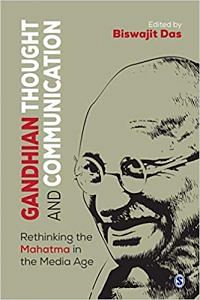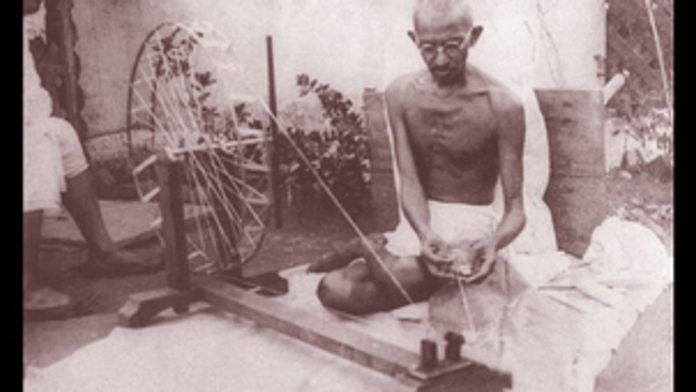The general strike in the cotton mills of Ahmedabad in 1918 was important for various reasons. First, it was one of the earliest general strikes in the second largest production centre of cotton textiles, employing about 40,000 workers in 1918. Second, the involvement of Gandhi in the strike with his philosophy of satyagraha and non-violence made it different. And finally, the emergence of the Textile Labour Association out of this strike, which believed in the principle of arbitration and which lasted for very long, put the stamp of uniqueness on it.
Throughout its career, it was distinguished from other trade unions in the country. The single most important factor which made this possible was the influence of Gandhi on its formation and growth. There are some significant writings on this strike as well as on the labour movement in Ahmedabad as a whole. But their focus, quite understandably, has been more on labour than on Gandhi. In these works, the analysis of Gandhi’s role varies from criticism to praise. But there has not been the required effort to understand Gandhi’s involvement from his point of view. In this chapter, I would try to view this strike from Gandhi’s point of view, the way he felt and thought throughout the progress of the strike and its largely satisfactory conclusion.
After he assumed the responsibility, Gandhi wanted to find a middle path between the millowners and workers in every respect. To begin with, he decided to introduce the idea of arbitration between the contending parties. But after this was unsuccessful, he decided that a demand for an increase of 35 per cent in the wages would be right as it was placed midway between what the workers demanded, which was 50 per cent increase, and what the millowners wanted to give (20 per cent).
Similarly, he did not want that the self-respect of either the workers or the employers be compromised. He also wanted that the interests of both the workers and the employers be protected: ‘We shall promote the workers’ interests while duly safeguarding [those of] the employers’. He advised the workers to follow the path of non-violence to achieve their aims. Right from the beginning, the struggle was termed as ‘Ek Dharmayuddha’, the meanings of which unfolded as the struggle proceeded forward.
In one of the meetings addressed to the workers, Gandhi told them that ‘we must remain firm … and must not resume work even if we have to die.’ It was true that the workers were poor, but ‘they possess a wealth superior to money.’ It was ‘their courage and their fear of God’. He also assured them that they would not be allowed to die of starvation. He was convinced that the demand for a 35 per cent increase was just and fair and it should not be changed from either side.
During the course of a prayer discourse at his Ashram, Gandhi made clear that it is not only against Government that satyagraha can be employed. It can be employed in any situation, against any person or body…. In Kheda, satyagraha has been going on against the Government and in Ahmedabad against the rich and also against the scriptures on the issue of the untouchables.
Also read: Gandhi is a Mahatma, I am not, said Sardar Patel
He, therefore, drew a parallel between various types of struggles going on in the country in which the satyagraha was being applied. This signified that he was placing this particular struggle in the broader context of nationalist quest. Moreover, he also applied his particular way of conducting a struggle which, as he often said, was tested successfully in South Africa. In a leaflet issued on 27 February 1918, he advised the workers to be truthful, to have courage, to possess a sense of justice, not to be angry with the employers, to remember that there would be suffering, and to have faith in God. He, thus, wanted the workers to be real satyagrahis who would struggle to achieve their aims regardless of consequences through particular means which would be moral, ethical and spiritual.
On the same day, in a meeting with the striking workers, he cautioned them not to heed the advice of those who tell them to accept whatever the millowners had agreed to pay as increase, which was 20 per cent. Instead, they should stick to their demand and show firmness. He advised them to rely on the strength of their hands and feet, which would get them work anywhere. Only then could they assert their dignity and standing before the employers who should not take them for granted.
He further exhorted them not to give in and to stick to their pledge, otherwise their children and the future generation would not think highly of them. So, even if they starved, they should not forsake their vow. In order to sustain the strike, Gandhi advised the workers not to indulge in ‘mischief’, not to gamble, not to sleep during the day, not to gossip or to idle, and not to go to the mills. Instead, they should spend their time in cleaning their surroundings, repairing their houses and compounds, and the literates among them helping the others by reading books and sharing their knowledge with the illiterates; those who are skilled workers might look for some work for which help from his side as well as from that of the organizers would be offered; those who know only the mill-work should try to learn some subsidiary occupations. Here he also laid out his idea about the desirability of learning and doing any occupation for everyone:
In India, a person in one occupation thinks it below his dignity to follow any other. Besides, some occupations are considered low and degrading in themselves. Both these ideas are wrong. There is no question of inferiority or superiority among occupations which are essential for man’s existence. Nor should we be ashamed of taking up an occupation other than the one we are used to. We believe that weaving cloth, breaking stones, sawing or splitting wood or working on a farm are all necessary and honourable occupations. We hope, therefore, that instead of wasting their time in doing nothing, workers will utilize it in some such useful work.
Also read: Gandhi cursed ‘luscious’ mangoes he once loved because he wanted to transcend sex & desire
On 12 March, the employers resolved to withdraw the lockout and take back those workers who were willing to accept 20 per cent increase. Seeing the condition of the strikers, it was not unlikely that most of them would have joined back. Now Gandhi insisted the workers should not resume work on less than 35 per cent increase because they would lose their honour. He argued that even the employers would not benefit ‘by taking work from workers who are too weak to keep their oath’. He, however, insisted that those willing to join would not be stopped except by persuasion.
Gandhi realized that the workers were facing the condition of starvation for themselves and their families. In such a situation, it might be difficult to hold them back from joining. Some sympathizers offered to help with money and material to prolong the strike. But Gandhi politely refused them by saying that: ‘What is the meaning of satyagraha if you help the workers with money to carry it on… The essence of satyagraha lies in cheerful submission to the suffering that may follow it. The more a satyagrahi suffers, the more thoroughly he is tested’. But with workers’ weakening resolve, Gandhi felt that the strikers did not understand his views. In a leaflet on 15 March, he was more explicit and candid about what he expected from the strikers as satyagrahis:
As the weapon of the rich is money, that of the workers is their labour… One who does not work is not a worker. A worker who is ashamed of working has no right to eat… Those who collect funds and, remaining idle, maintain themselves out of them do not deserve to win. Workers are fighting for their pledge… This struggle is not merely for a 35 per cent increase; it is to show that the workers are prepared to suffer for their rights. We are fighting to uphold our honour… We must maintain ourselves by our own labour [and not by public funds].
He, therefore, expressed the hope that ‘every worker will work to maintain himself so that he may be able to keep his oath and remain firm’. By then, however, some of the workers had remarked that while Gandhi and Anusuya Sarabhai are living and eating well, they are demanding from the workers to starve for their vow. Such sarcastic remarks stung Gandhi and he decided to undertake fast to show his commitment, and also make the workers steadfast in their struggle. As he said: ‘My pledge is directed to making the mill-hands honour theirs…. And for ten thousand mill-hands to break faith with themselves would spell ruin for the nation.’
Also read: In the lead up to Partition, Gandhi’s own prayer meetings were becoming polarised
Gandhi’s fast created quite a stir, and the millowners were forced to meet him and offered to do whatever he wanted. Gandhi was not very happy with this situation because he felt that the employers had given in due to his fast and not due to either in appreciation of the workers’ condition or workers’ struggle: ‘The mill-owners came and told me, “We shall give 35 per cent for your sake”… It would be extremely humiliating to me that they offer you 35 per cent for my sake’. It was because if ‘the mill-owners have acted under pressure of my fast… It is against the principle of justice’. He, therefore, moderated his original demand for 35 per cent increase on the first day, 20 per cent on the second day and 27.5 per cent subsequently until the arbitrator accepted by both the parties gave his judgement. After this, the strike ended.
 This excerpt from Gandhian Thought and Communication: Rethinking the Mahatma in the Media Age, edited by Biswajit Das, has been published with permission from Sage Publications.
This excerpt from Gandhian Thought and Communication: Rethinking the Mahatma in the Media Age, edited by Biswajit Das, has been published with permission from Sage Publications.



